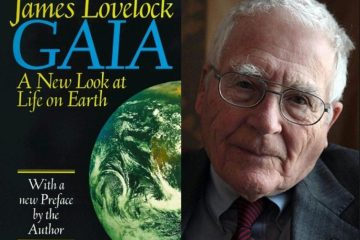Table of Contents
- Early Academic Journey and Influences
- The Role of Self-Directed Learning in Lovelocks Education
- Integration of Interdisciplinary Studies in Lovelocks Career
- Key Lessons from James Lovelocks Educational Path
- Recommendations for Aspiring Scientists Inspired by Lovelock
- Q&A
- To Conclude
Early Academic Journey and Influences
James Lovelock’s formative years laid the groundwork for what would become a pivotal scientific journey. Born in 1919 in Letchworth Garden City, England, Lovelock’s early exposure to science was nurtured by his inquisitive nature and supportive family environment. His fascination with the natural world was evident from a young age, as he indulged in solitary explorations and home-grown experiments. Leveraging on these early experiences, Lovelock’s engagement with science deepened markedly during his secondary school years. He developed a keen interest in physics and chemistry, two subjects that would greatly influence his later work and philosophies.
The academic sphere during Lovelock’s school days was greatly influenced by the prevailing scientific developments of the early 20th century. Inspired by pioneers like Albert Einstein and Marie Curie, Lovelock found himself drawn to understanding the intricate details of physics and the way things worked. Moreover, the educational system at that time encouraged exploration and creativity, allowing students to delve into topics beyond the standard curriculum. This openness to intellectual curiosity played a crucial role in shaping Lovelock’s scientific pursuits, sparking a lifelong commitment to learning and discovery.
Lovelock’s academic journey was also marked by the influence of key mentors who recognized his potential and encouraged his explorations. His teachers provided guidance that helped him navigate the complex world of science, offering both challenge and support. Under their tutelage, Lovelock honed his critical thinking skills, fostering a mindset willing to question and innovate. These influences are reflected in his later revolutionary work, which seamlessly integrated interdisciplinary approaches—a testament to the solid foundation built during his early academic years.

The Role of Self-Directed Learning in Lovelocks Education
James Lovelock’s educational philosophy emphasizes the importance of fostering autonomous learning among students. This approach relies on a learning environment that encourages exploration and experimentation. In this setting, students naturally develop critical thinking skills which are paramount in navigating complex subjects and real-world challenges. By letting students guide their own learning journey, they not only tailor educational experiences to suit personal interests but also gain confidence in problem-solving independently.
In Lovelock’s model, several key strategies are implemented to support this style of learning:
- Project-Based Assignments: Promotes engagement by allowing students to dive deep into subjects they are passionate about.
- Access to Diverse Resources: Encourages exploration across different platforms, from digital libraries to interactive workshops.
- Mentorship and Guidance: Provides a support network for students, pairing them with mentors who guide without dictating, fostering a supportive yet independent environment.
The impact of self-directed learning in educational setups, much like Lovelock’s, is further emphasized when viewed through student outcomes. The table below illustrates the reported benefits according to recent studies:
| Outcome | Reported Improvements |
|---|---|
| Critical Thinking | 75% of students showed enhanced abilities |
| Engagement | Increased engagement by 60% |
| Autonomy | 80% of students expressed greater independence |

Integration of Interdisciplinary Studies in Lovelocks Career
James Lovelock’s academic journey is a testament to the power of cross-disciplinary exploration. His initial foray into chemistry was soon enriched by studies in medicine, allowing him to develop a profound understanding of the natural world. This diverse educational background laid a robust foundation for his innovative approaches and theories. By synthesizing knowledge from various scientific fields, Lovelock was able to pioneer ideas that have had a lasting impact on environmental science. The ability to draw connections between seemingly unrelated disciplines underscores the versatility and depth of his intellectual pursuits.
Lovelock’s interdisciplinary approach led to innovations such as:
- Development of the electron capture detector, which revolutionized atmospheric measurements.
- Conceptualization of the Gaia hypothesis, merging biology and Earth science.
- The use of chemistry and physics in environmental monitoring techniques.
| Field | Contribution |
|---|---|
| Chemistry | Invention of highly sensitive detection instruments. |
| Ecology | Gaia theory for ecological balance. |
| Medicine | Insights into environmental health effects. |
Lovelock’s work highlights the importance of merging different scientific perspectives to address global challenges. His educational journey illustrates how interdisciplinary studies can empower individuals to think outside conventional frameworks, encouraging innovative solutions in scientific queries and practical applications alike. Such an integrated approach not only enriches one’s understanding but also prepares one to tackle the multifaceted issues facing the modern world with a broad and insightful perspective.

Key Lessons from James Lovelocks Educational Path
James Lovelock’s educational journey offers several enlightening insights into how diverse fields of study can converge to foster groundbreaking ideas. Initially trained as a chemist at the University of Manchester, Lovelock’s education was grounded in the rigorous scientific method, which taught him to approach problems analytically. However, his curiosity extended beyond mere chemical reactions and into the organic intricacies of life, which led him to further studies in medicine and biology. This multidisciplinary approach equipped him with a broad perspective, highlighting the importance of academic diversity and cross-disciplinary learning in creating innovative scientific theories.
One of the most striking aspects of Lovelock’s educational path is the emphasis on self-led learning. Despite following a structured academic path, he continuously sought knowledge outside the classroom, driven by personal inquiry and experimentation. Self-directed education played a pivotal role in Lovelock’s development as he combined formal education with independent research. For students and lifelong learners, this teaches the value of proactively seeking knowledge, fostering an enduring curiosity that transcends traditional educational boundaries. His approach exemplifies how balancing formal education with self-initiated learning can lead to profound scientific contributions like the Gaia theory.
Lovelock’s path also illustrates the significance of adaptability in education. His ability to integrate knowledge from different scientific disciplines allowed him to develop a holistic view of the Earth as a self-regulating system. Lessons from his integration:
- Interdisciplinary Applications: Leveraging knowledge from one field to address challenges in another.
- Practical Experimentation: Applying theoretical knowledge in real-world scenarios to test hypotheses.
- Global Thinking: Understanding environmental issues requires a comprehensive perspective.

Recommendations for Aspiring Scientists Inspired by Lovelock
Delving into the world of science with a curiosity as profound as James Lovelock’s requires dedication, patience, and a willingness to explore the unknown. Aspiring scientists can take inspiration from Lovelock’s interdisciplinary approach, which blended chemistry with earth sciences to create holistic models of understanding. One beneficial step is developing a broad foundation across scientific disciplines. This not only enhances problem-solving skills but also opens doors to unexpected connections and innovations. Consider enrolling in courses that span biology, chemistry, physics, and environmental science to echo Lovelock’s integrative mindset.
- Diversify Your Skills: Engage in interdisciplinary studies to broaden your scientific perspective.
- Fieldwork Experience: Hands-on experience in laboratories and fieldwork can provide real-world understanding and inspire innovative thinking.
- Mentorship: Seek guidance from experienced scientists who can provide wisdom and insights drawn from their own careers.
Collaborative efforts, much like those Lovelock engaged in, can lead to groundbreaking discoveries. Building a network of mentors, peers, and colleagues is essential. Connect with fellow scientists through conferences, workshops, and online science forums. Participation in such communities can lead to fruitful discussions and potential collaborations. Additionally, it is crucial to maintain a curious and open mindset, ready to accept ideas from all corners of scientific inquiry. Remaining receptive to various scientific viewpoints and developments ensures a well-rounded expertise and mirrors Lovelock’s pioneering spirit.



0 Comments